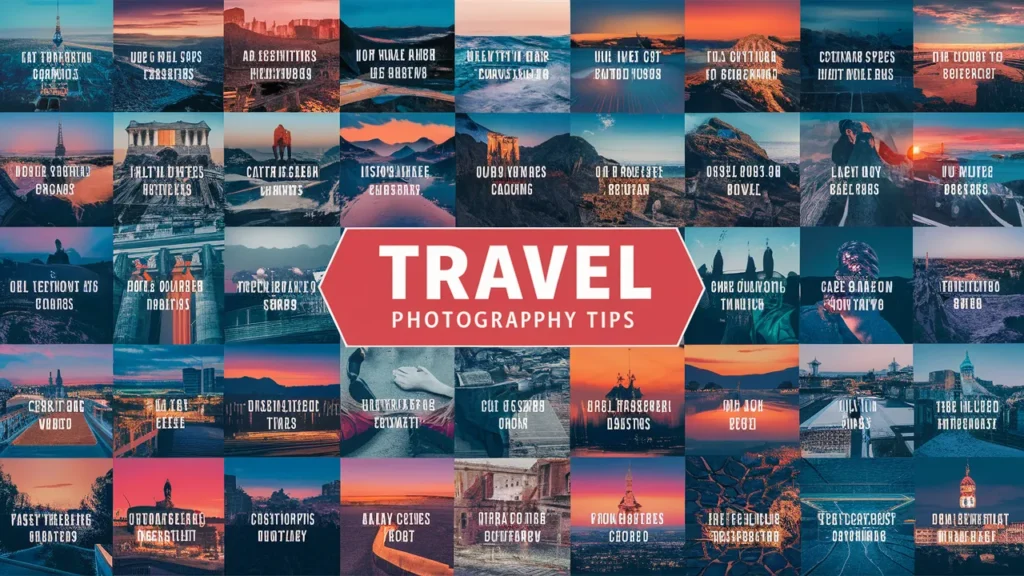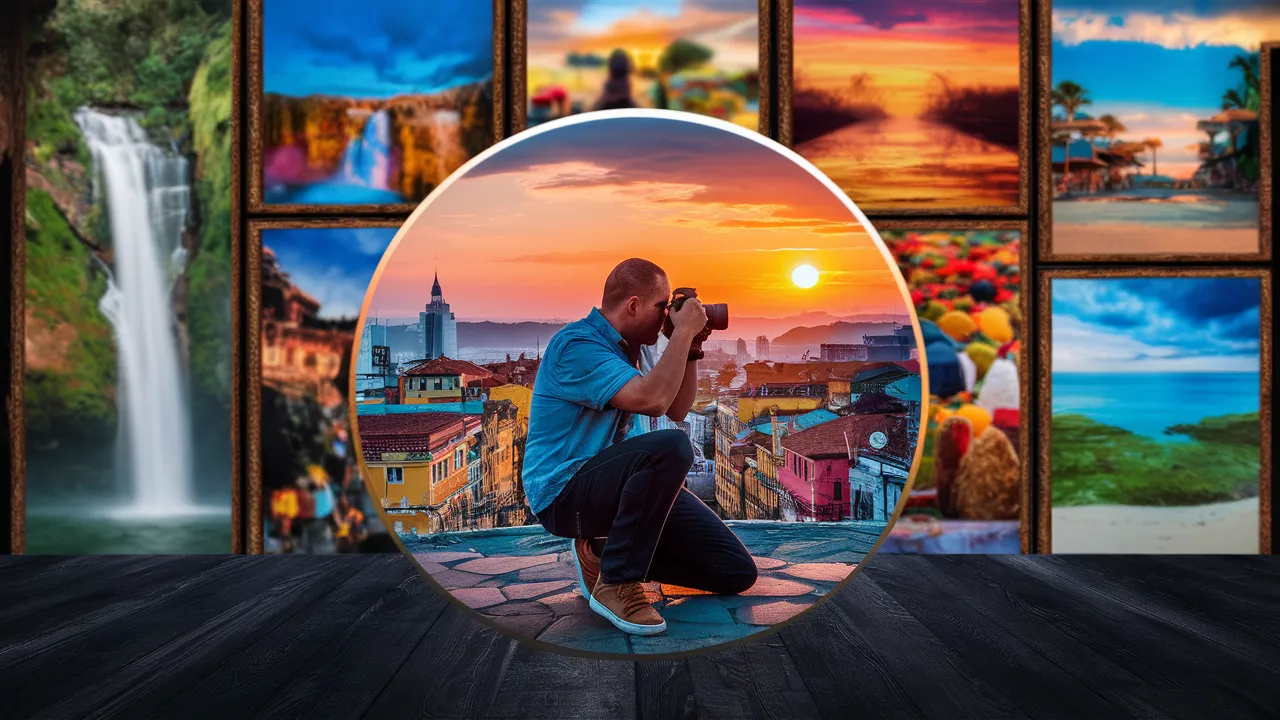Introduction
Travel photography is more than just capturing images; it’s about narrating experiences, emotions, and the unique essence of the places we visit. Whether you are a seasoned traveler or just starting on your photographic journey, understanding the nuances of travel photography can significantly enhance your portfolio. The following tips will help you navigate the art of capturing stunning travel photos.
Understanding the Basics of Travel Photography
Before diving into the techniques, it’s essential to grasp the fundamental concepts of travel photography. This foundation will support your artistic expression and improve your photographic storytelling.
Importance of Light in Photography
Light is one of the most critical elements in photography. The quality, direction, and color of light can dramatically affect the mood of your images. Golden hour, which occurs shortly after sunrise and before sunset, is particularly valued for its soft and warm light. Understanding how to manipulate light can enhance your composition and bring your photos to life.
Additionally, clouds can create a diffused light effect that softens shadows and highlights, making it an ideal condition for capturing outdoor scenes. Always be aware of how light interacts with your subject and adjust your settings accordingly. Moreover, experimenting with backlighting can create stunning silhouettes, adding depth and intrigue to your photographs. Don’t shy away from harsh midday sun either; with the right techniques, you can capture vibrant colors and sharp details that bring your subjects to life.
Choosing the Right Equipment
The equipment you select plays a significant role in the outcome of your travel photography. While high-end cameras can produce stunning images, it’s crucial to remember that good photography is more than just the gear. That said, consider the following essentials:
- A versatile lens: A zoom lens can help you capture a variety of scenes without needing to change your lens frequently.
- Tripod: A lightweight tripod allows for stability during low-light conditions while taking landscape photographs or long exposures.
- Extra batteries and memory cards: Ensure you have ample storage and power to capture all the moments during your travels.
Ultimately, choose equipment that suits your personal style and the type of photography you wish to pursue. Additionally, consider investing in a good camera bag that provides protection and easy access to your gear. A well-organized bag can save you precious time when you need to grab your camera quickly to capture a fleeting moment. Accessories like polarizing filters can also enhance your images by reducing glare and improving color saturation, particularly when shooting landscapes or water scenes.
Composing Your Shots
Composition is key in travel photography. A well-composed photograph can draw the viewer’s eye and convey the emotional essence of a scene. Use compositional techniques such as the rule of thirds, leading lines, and framing to enhance your images. Experiment with different angles and perspectives to find unique viewpoints that make your photos stand out.
Dedicating time to study your surroundings and visualize your shots can lead to remarkable photographs that tell a compelling story. Additionally, incorporating elements of foreground interest can add depth to your images, inviting viewers to explore the entire frame. Don’t forget to pay attention to the background as well; a cluttered or distracting background can detract from your subject. Take a moment to adjust your position or angle until you find a clean backdrop that complements your main focus, ensuring that every element in your composition works harmoniously together.

Mastering the Art of Storytelling through Photos
Travel photography is, at its core, a form of storytelling. Capturing the right moments can create connection and bring life to the places you visit.’
Capturing the Essence of a Place
Focus on the elements that make each location unique. It could be architectural details, natural landscapes, or daily life scenes. These characteristics reflect the heart of a place, allowing your audience to experience it vicariously through your photographs. Always be ready to take spontaneous shots that evoke the spirit of your surroundings.
Portraying Local Culture and Traditions
Through your photography, you have the opportunity to showcase local cultures and traditions. Engaging with locals and participating in events can lead to intimate and authentic moments that tell a deeper story. Ensure that you’re respectful when photographing people and their customs, and always ask for permission where appropriate.
The rich tapestry of life can often manifest in candid moments that highlight the essence of a location and enrich your travel narrative.
Read More: Top 10 Year Anniversary Trip Ideas for an Unforgettable Celebration
Practical Tips for Travel Photography
Beyond the creative aspects, there are practical considerations to enhance your travel photography experience.
Dealing with Weather Conditions
Weather can be unpredictable, but with the right mindset, it can also offer unique photographic opportunities. Don’t shy away from capturing scenes in rain or overcast skies, as these conditions can create atmospheric effects. Carrying weather-sealed equipment can help protect your gear from moisture.
Timing Your Shots
Planning your shoots for specific times of the day can yield outstanding results. Some subjects can look entirely different depending on the time of day. Take advantage of the golden hour for softer shadows or try to capture the blue hour right after sunset for a mystical vibe.
Balancing Tourist Spots and Offbeat Locations
While iconic landmarks are often treasure troves for photographers, exploring offbeat locations can yield breathtaking images that are less conventional. Allow yourself to wander and discover locations that resonate with you. This balance can enrich your portfolio and offer a diverse representation of the places you’ve visited.
Post-Processing Techniques for Travel Photos
Editing your travel photos can elevate them further and allow you to refine your artistic vision.
Enhancing Photos with Editing Tools
Using editing software allows you to adjust exposure, contrast, and color balance, making your images pop. Familiarize yourself with tools like Adobe Lightroom or Photoshop to enhance your images without overdoing it. A subtle enhancement often suffices to achieve a professional finish.
Preserving the Authenticity of the Scene
While editing is essential, strive to maintain the authenticity of the original scene. Over-editing can lead to unrealistic representations that detract from the actual experience. Aim for a balance between enhancement and authenticity that conveys the true essence of your travels.
Overcoming Challenges in Travel Photography
Travel photography comes with its own set of challenges, but overcoming these can lead to remarkable experiences and richer photos.
Handling Gear and Equipment on the Move
Choosing the right backpack can alleviate the burden of hauling equipment around. Look for backpacks designed specifically for photographers—they offer ample padding and customizable compartments for easy access. Keep your gear secure while remaining mobile to capture fleeting moments with ease.
Respecting Local Customs and Regulations
It’s crucial to respect local customs and laws regarding photography. Certain locations may have restrictions, especially in religious or culturally sensitive areas. Being mindful and respectful will enhance your experience and maintain positive relationships with the locals.
Conclusion
Travel photography is a rewarding experience that requires understanding, practice, and respect. By combining technical skills with an eye for storytelling, you can create stunning photographs that capture the spirit of your adventures.
FAQs
What are the essential camera settings for travel photography?
To capture the best travel photos, set your camera to aperture priority mode (f/8-f/11) for landscapes and a wide aperture (f/2.8-f/5.6) for portraits. Use ISO 100-400 in daylight and increase it in low light. Shutter speed should be fast (1/500 or more) for moving subjects and slower (1/30-1/60) for still scenes.
How can I take better travel photos with a smartphone?
To improve smartphone travel photography, clean your lens regularly, use grid lines for composition, and experiment with different angles. Take advantage of your phone’s HDR mode, and use editing apps like Snapseed or Lightroom Mobile to enhance your shots post-capture.
What is the best time to shoot travel photos?
The golden hours (shortly after sunrise and before sunset) offer the best natural lighting, creating warm tones and soft shadows. Avoid harsh midday sunlight, as it can create strong contrasts and washed-out colors.
How can I capture candid moments while traveling?
For candid travel shots, keep your camera or phone ready at all times. Blend into your surroundings and use a zoom lens or smartphone zoom to capture subjects from a distance. Try to anticipate moments, such as street performers or locals interacting.
How do I protect my photography gear while traveling?
To protect your photography gear, invest in a padded, weather-resistant camera bag, carry lens and camera covers, and pack silica gel to prevent moisture buildup. When traveling in remote or rugged areas, bring backup batteries, memory cards, and a portable hard drive for backups.
